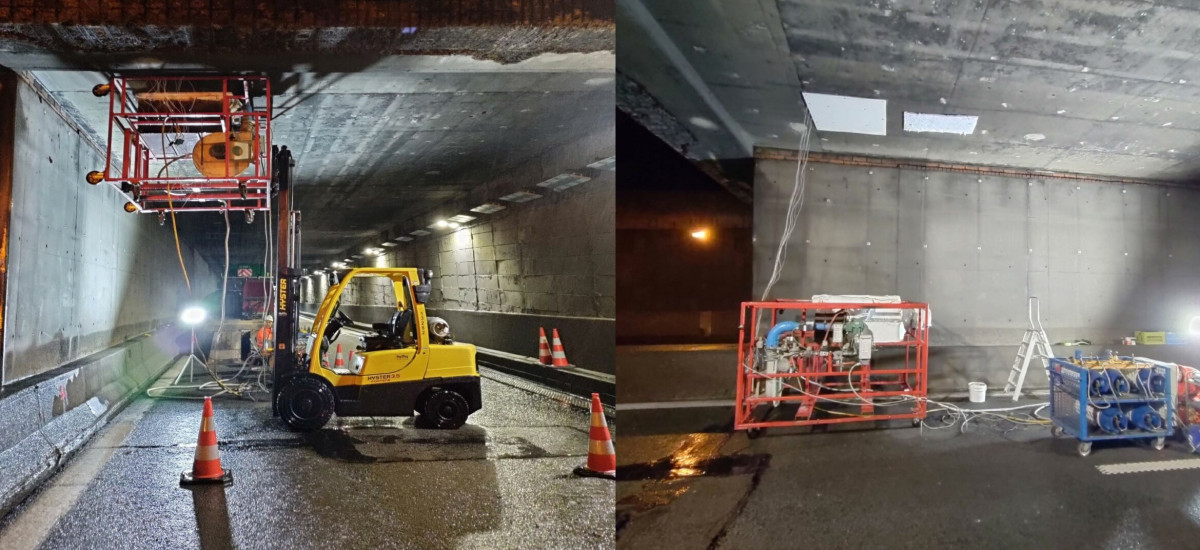27/9/2023
At the beginning of 2023, Efectis Nederland carried out multiple fire tests in the Leonardtunnel in Belgium. These tests were carried out in the lower of the two tunnels under the Leonard intersection. The tunnels date back to the 1970s and now need extensive renovation work to extend their lifespan. The fire resistance of the Leonardtunnel is an important part of this renovation project.
Our mobile furnace (MobiFire®) is an effective way to test the fire resistance of a tunnel construction. The MobiFire® is transported to the test location inside the tunnel and, once in place, a forklift is used to hold it in the correct position for both vertical and horizontal fire tests. At this stage, the equipment needed to control the furnace and measure temperatures can be connected. The MobiFire® is designed to apply ISO fire curve or RWS fire curve (temperature of 1350°C!). This means that tunnel constructions can be tested to see if they are able to withstand the highest fire curves.
The object of the fire-resistance tests was to determine the temperatures at which concrete starts to spall, in this case the concrete on both the wall and roof of the tunnel. To be able to install the measuring equipment (thermocouples) just below the concrete surface, slots were cut into the concrete wall and roof of the tunnel. An undersized (thickness of) fire-resistance board was then installed, making it possible to measure the temperature increase on the surface of the concrete. The results obtained can be used to design a fire-resistant system. Armed with an appropriate fire-resistant system, the tunnel can be protected and damage to the tunnel construction can be prevented. This method is mainly used in existing tunnels that are being renovated to bring them in line with new requirements.
One big advantage of the MobiFire® is that it can be used anywhere on site, because of which it is an effective way to test tunnels for fire resistance.
For more information, please contact: Mitchell Kok

